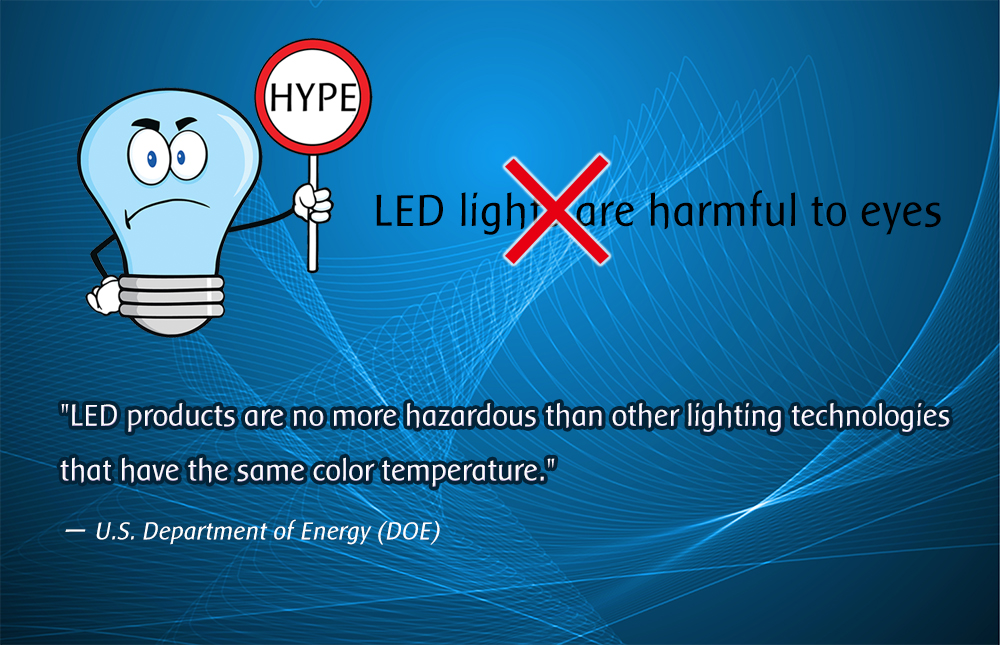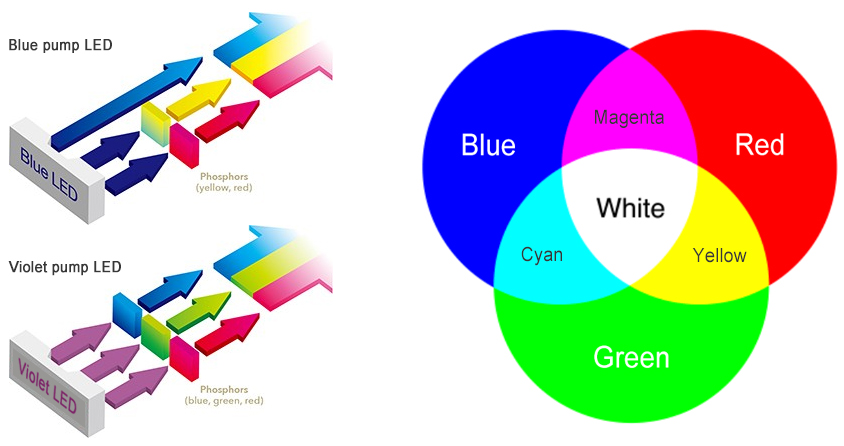Table of Contents Hide
- 1 Delivering Critical Illumination for Visually Demanding Office Work and Study Activities
- 2 Task Lighting
-
3
Lighting Technologies
- 3.1 Incandescent
- 3.2 OLED
- 3.3 LED
- 4 Optical Design
- 5 Ambient Adaptation
- 6 Desktop Illuminance
- 7 Color Rendering
- 8 Color Temperature
- 9 Photobiological Safety
- 10 Light Flicker
- 11 Ergonomics
- 12 Lighting Control
- 13 Quality Evaluation

Delivering Critical Illumination for Visually Demanding Office Work and Study Activities
A desk lamp is a portable task light that sits on a desk or table to provide targeted illumination for accomplishing tasks such as computer work, reading, writing, drafting, crafting, bookkeeping, sewing, knitting, and painting. Desk lamps provide adjustable illumination to ensure task visibility and ergonomic comfort. They are designed and controlled to affect only specific task area being illuminated. Desk lamps provide flexibility to change lighting positions to compensate for the shadows created by obstructions that block light from ambient lighting. These task lights are used to help improve performance and increase productivity with work that involves great levels of detail and contrast. Modern desk lamps with adjustable light output and/or color temperature can also be used to switch up the atmosphere and set the mood for an interior space.Task Lighting
Task lighting is a critical element in any environment that is intended to promote concentration, foster creativity and support continuous work. The foundation of localized lighting design is to provide optimal quality and quantity of light for a supportive visual environment which allows people to safely, efficiently and accurately perform a variety of visual tasks. The lighting in an office or studying environment is deemed of high quality such that it enables occupants to see their visual tasks easily and comfortably. Beyond task visibility, light is a psychological and physical stimulus that can influence human behavior, satisfaction, interest and enthusiasm. Whether you operate from 9 a.m. to 5 p.m. in your corporate office or spend late nights at the home office, task lighting must be adapted to your personal needs to support a prolonged stay and an enjoyable interaction with task objects. Inadequate illuminance and uncomfortable lighting may lead to visual discomfort, impair health, and negatively affect task performance, aesthetic perceptions, social communication, environmental and job satisfaction.
Lighting Technologies
The light source of a desk lamp can make a big difference in lamp performance and light quality. The history of electric lighting has been a continuous evolution punctuated by a series of major innovations. While the most recent buzz in lighting is solid state lighting based on light emitting diode (LED) technology, we think it's necessary to have a review of the major technologies suitable for task lighting. Despite the endless quest for energy efficiency in electric lighting, our discussion about desk lamps will steer you toward the qualitative side. Among all lighting products, desk lamps have the highest demand on light quality because the functional illumination provided by these task lights is vital for our visual performance and health. We deliberately skipped the introduction of fluorescent lighting for the reason that this lighting technology is nothing worth mentioning in task lighting applications. Neither is it better than incandescent lights when it comes to light quality (color rendering, flicker control), nor does it performs better than LED lights in terms of efficiency and controllability.Incandescent
You might be surprised that we mention and even nominate the obsolete incandescent lamps as the best light source for desk lamps. Notwithstanding the high cost of maintaining an installation which comes from high energy use per lumen and the frequency of replacing burned-out lamps, incandescent and other filament source lamps, including tungsten-halogen, have inherently superior light quality that involves a huge cost for other technologies to achieve. Low first cost and high quality of light offer a good compensation for the high operation cost of incandescent lamp. Furthermore, you couldn't be wrong using an incandescent bulb from any brand because the technology is deadly simple. On the other hand, the design and engineering of solid state lighting systems are so complicated that manufacturers can easily game the technology.Incandescent lamps are known for their ability to accurately render colors. Light emitted by these thermal radiators has a spectral power distribution (SPD) spread throughout the visible spectrum more uniformly than any other traditional light sources. Natural daylight has a high CRI (Ra of approximately 100), with incandescent bulbs being the closest (Ra greater than 97) in all light sources. The CRI Ra metric alone can't define the color rendering capability of a light source because it does not span the complete range of normal visible colors. Many desk lamps use LEDs with relatively high CRIs perform poorly in rendering highly saturated colors. This is because light produced by these LEDs is deficient in R9 (for red color rendering) and other saturated color components. Incandescent produces broad-spectrum white light that can faithfully render all saturated colors.
At full rated power, the incandescent lamp has a correlated color temperature (CCT) usually within the range of 2700 K-3300 K. However, when the incandescent lamp is dimmed, a color shift occurs and the lamp appears to go from neutral white to a warmer yellow or yellowish red (1700 K). This unique characteristic of incandescent bulbs has utilized to create a warm and comfortable environment. The Dim-to-Warm technology in LED lighting was created to mimic this feature but the complexity in technology adds to the cost of LED lighting systems.
Flicker is a big concern in LED lighting because LEDs suffer from the temporal variation in the power supply and require dedicated circuitry to smooth out the ripple. In contrast, incandescent and halogen lights are thermal radiators which produce minimal flicker thanks to the relatively long persistence unique to high thermal capacity tungsten filaments.
OLED
An OLED (organic light emitting diode) uses an electroluminescent layer (EML) of organic compounds to emit light in response to the electric current through the diode. The OLED has a structure consisting of various layers of organic semiconductor material sandwiched between the positive (anode) and the negative (cathode) electrodes. When a current is applied, the anode injects holes and the cathode injects electrons into the organic layers which, in addition to the EML layer, include a hole transport layer (HTL) and an electron transport layer (ETL). In the EML layer, holes and electrons recombine to generate electron-hole pairs called excitons. Light is emitted when the excitons attenuate from the excited state to the ground state.The building blocks of organic layers are carbon-containing small molecules or polymers which collectively contribute to OLED's surface emission pattern. The mixture of organic layers can be tuned with appropriate dopants to give OLEDs a broad-band emission spectrum. Therefore the wavelength distribution of the light generated by an OLED s allows the human eye to distinguish between a large variety of colors. The ability to produce high CRI light across large surfaces opens up a whole new world of opportunities for working with light. Even 3-dimensional, paper-thin flexible and transparent designs are possible. OLED does not produce radiant energy in the UV or IR regions of the spectrum. While the issue of blue light hazard is debatable, OLED lighting is being pitched as a light source that does not lend users to risks of photochemically induced retinal injury resulting from radiation exposure at wavelengths between 400 nm and 500 nm. All these attributes are strong selling points for OLED desk lamps.
However, OLED lighting is losing momentum in recent years primarily owing to its soaring high upfront cost. At the same time, LEDs with color quality comparable to OLEDs have a more reasonable cost which, along with innovations in optical engineering and LED's inherently superior controllability for advanced lighting features, well justifies the industry's sweeping embracement of LED based lighting systems, including LED desk lamps.

LED
Like it or not, LED technology has a dominant presence in the lighting industry. The controversial part about LED is not its technology, but the deficiency in regulations on light quality. LED lighting is a synergistic combination of light source, power regulation, optical engineering and thermal management. Compromise in any aspect will lead to deterioration in light quality. Low quality LEDs are poor in color performance. LED power supplies that employ a low cost design usually result in light flicker and other visual anomalies. Inadequate optical design will leave the eye exposed to the harshness of LEDs. Inefficient thermal management will accelerate lumen depreciation and chromaticity shift. The regulatory authorities lay too much emphasis on energy labelling of electrical lamps but overlooked the most critical part in LED lighting - the quality of light.For a long period of the history of artificial lighting, we tolerated the fact that fluorescent lamps render the world with lifeless colors. We still face this problem in the era of LED lighting because many lighting manufacturers are fooling around with uneducated consumers. Cheap LEDs which have poor color rendering and thermal stability are widespread in residential light fixtures. To reduce component cost to a minimum, barebones driving circuits and lightweight heat sinks are incorporated in LED lamps. SMD based A19 (A60) LED bulbs, for example, are virtually a synonym of crappy products in the eyes of industry insiders. These bulbs are made with the bottom line of just providing the "brightness" expected by general consumers and meeting the perfunctory certification requirements. Light quality simply fell off the radar. You'd better stay away from desk lamps that use LED bulbs. It is a mission impossible to find an A19 LED bulb on the market that offers high quality light and a long service life.
LED technology has matured significantly within the past years. The interest in LED lighting has been gradually shifting from luminous efficacy to light quality. Top tier LED manufacturers like Cree, Nichia and Seoul followed this trend and introduced to the market spectrally optimized LEDs that provide incandescent-grade color quality. Improved light spectrum and the increasing affordability offer a new drive for desk lamp manufacturers to invest their resources in LED technology. However, LEDs alone do not contribute to a good lighting products. The design of an LED desk lamp is a multidimensional engineering work which needs to take thermal management, drive current regulation and optical control into account. LED desk lamps are increasingly designed as integrated systems which allow every critical aspect of lighting to be optimized, rather than lamp-based systems which rely on crappy LED bulbs.
Optical Design
At a bare minimum, desk lamps should be designed to support optimal eye comfort. The characteristics of LED lighting pose a significant challenge to achieve this goal. LEDs are high intensity light sources that can cause extreme discomfort when viewed directly. Without thoughtful optical design, an LED desk lamp would be a source of discomfort glare which is a sensation of irritation or pain from high luminance in the field of view. High luminance, as mentioned above, is also a risk factor for blue light hazard. Modern desk lamps are typically equipped with no lamp shades, this makes luminance attenuation a top design consideration. Aside from glare control, the uniformity and coverage of desktop illuminance have to be taken into account simultaneously during the design stage. Illuminance uniformity over the task area has a huge impact on task performance and visual comfort.The optical architecture for an LED desk lamp can be either a direct-lit or an edge-lit design. A direct-lit LED desk lamp uses a diffuser made of acrylic or polycarbonate to evenly distribute luminous flux from the LEDs to all directions while eliminating bright spots. This optical design is simple to implement but still creates high luminance. To achieve high luminaire efficacy, cheap LED desk lamps simply leave the harsh LEDs exposed. The edge-lit design uses light guide technology to extract, direct and distribute the luminous flux from LEDs arranged along the sides of the light panel. Edge-lit technology innovatively transforms a luminaire that uses the point light sources into a surface emission device, allowing the luminaire to cast a pleasant pool of light over a large task area. The ability to uniformly distribute light across an ultra-thin panel allows edge-lit LED desk lamps to deliver visual comfort comparable to the steeply-priced OLED desk lamps.

Shadeless, direct-lit LED desk lamps often produce strong discomfort glare.
Ambient Adaptation
A common misconception about desk lamps is that these portable lights are used independently in a room. Desk lamps, when they're used for task illumination—not low ambiance atmospheric lighting or safety lighting—are required to work in conjunction with an ambient light source to maintain a proper luminance ratio between the task and other areas within the field of view. Task illuminances should not exceed five times the ambient illuminances so as not to create adaptation difficulties for the eye. Unpleasant sensation of brightness due to harsh luminous transition can compromise user satisfaction and reduce visual capabilities.Unfortunately, virtually all modern desk lamps have a poor design in terms of visual adaption with the adjacent environment. Aside from the difference in the decorative emphasis and adjustability, the major distinction between a desk lamp and table lamp is that the table lamp is typically designed with a semi-translucent lamp shade. The diffusing and transmissive shade provides a small amount of horizontal illuminance which contributes to a visually adaptive ambiance. Even when no ambient light from overhead or wall mounted light fixtures is provided, table lamps provide self-layered light that could strike a minimal balance between task and ambient lighting. Desk lamps, on the other hand, either come with an exposed emission surface which is irritating to the eye due to uncontrolled horizontal luminance or are equipped with a shade that completely block horizontal luminance. In whichever design an ambient light source is necessary to balance the light composition within a space.

In rooms illuminated by portable luminaires, shade translucency is vital to visual comfort. Virtually all desk lamps do not take visual adaptation with adjacent areas into design considerations. On the other hand, most table lamps have a shade with good diffusing and transmittance qualities that allow a visually comfortable amount of horizontal illuminance to be generated around the lamp.

In order to avoid high contrast, an additional amount of ambient light is necessary when task lighting is provided by a desk lamp with a non-translucent shade.
Desktop Illuminance
The quality of a desktop visual environment involves a wide range of variables. Illuminance, a measurement of the total luminous flux falling on a surface, is by far the most referenced lighting parameter. We recommend to buy a dimmable desk lamp to accommodate the illuminance requirement for multiple tasks and age groups. There is a substantial illuminance variation in different visual age groups of users because the performance of the human eye declines with age. Therefore what constitutes an appropriate illuminance for youth is not necessarily suitable for an aging population. For example, young people less than 25 years of age need a horizontal illuminance of 200 lx for handwritten work, 250 lx for reading 6-pt font print media, and 150 lx for reading on computer screens and illuminating keyboards (CSA/ISO Types I and II, positive polarity). Whereas people between the ages of 25 and 65 in general require two times the horizontal task illuminance recommended for the 25- age group, and the 65+ age group demands two times illuminance recommended for the 25-65 age group.You're not suggested to buy a desk lamp with a slim LED light stick even though it would give your desk a fashionable flourish. This type of desk lamps usually fails to illuminate uniformly across a task surface because of their narrow emission surfaces. Large illuminance variations make it difficult to read written characters and may increase sense of fatigue. The ratio of minimum illuminance to average illuminance over the task area should not be lower than 0.7. To ensure the horizontal illuminance uniformity, the emission surface of a desk lamp should be as large as possible.

Color Rendering
Color rendering is the ability of a light source to faithfully reproduce the colors of illuminated objects. Correct perception of the colors of objects is an important characteristic of the quality of light produced by a desk lamp. High color rendering light allows people to perform a lot of color critical tasks accurately, efficiently and comfortably. Poor color rendition distorts color appearances and produces eye strain. Quality task lighting generally attempts to emulate the full spectrum of natural light. Ever since the regulatory phase-out of incandescent lighting, the color quality of artificial lighting suddenly dropped and the accurate color rendering provided by cheap incandescent bulbs becomes an unaffordable luxury.There're no technological barriers for LED lighting to create a continuous spectrum of wavelengths that exhibits qualities closest to sunlight. The reason that many lighting manufacturers are reluctant to offer high color rendering desk lamps can be attributed largely to poor consumer awareness. A fundamental improvement of color quality calls for the push from consumers who no longer want to endure the spectrally inferior lighting. There's a trade-off between color rendering and luminous efficacy because different wavelengths of light do not affect human vision equally. There's a trade-off between color rendering and luminous efficacy. White LEDs in common use suffer from the energy loss associated with phosphor down-conversion, which is known as Stokes loss. The higher the amount of short wavelength light is converted into longer wavelength light, the larger the Stokes loss. A spectral power distribution (SPD) that is rich in longer wavelength light favors rendition of saturated colors. However, long wavelength light is emitted in the region where the eye has little sensitivity. This leads to a low luminous efficacy. High Stokes loss, low eye sensitivity and the additional cost to incorporate multiple layers of phosphors to broaden the spectrum contribute to the trade-off.
The majority of LED desk lamps use LEDs with a CRI under 85, which is sufficient for rendering most tasks. However, these products often fail to provide accurate rendition of saturated colors because there is a very little amount of light emitted in the orange-to-red wavelength range at the edge of the visible spectrum. Considering the fact that desk lamps are often used for applications where color discrimination is critical and visual acuity is a crucial, spectrally enhanced lighting with a CRI of 90 or greater should be employed. The luminous efficacy of high CRI LEDs is sufficiently higher than traditional light sources. Efficacy loss should not be an excuse to compromise color quality.

Color Temperature
Correlated color temperature (CCT) refers to the color appearance of a white light source, measured in degrees Kelvin (K). The Kelvin rating does not relate to the quality as well as the brightness of light, but it has a great impact on the way we perceive the environment illuminated by artificial lighting. Human circadian rhythm is a biological process that echoes the light cycle of the solar day. Our physical, mental and behavioral changes follow the dynamics of sunlight. The tone and intensity of sunlight regulates the rhythms of hormones such as melatonin (natural soporific) or cortisol (stress hormone). Specially, it's the blue light component in the spectrum that biologically control the production of hormones. During the daytime (e.g., from 9 a.m. to 4 p.m.), the natural daylight has a strong blue component which suppresses the melatonin production and promotes the release of cortisol, thus keeping people alert, active and productive. Warm light in the evening and early morning has less stimulating blues and therefore triggers the release of melatonin which encourages relaxation and regeneration.The higher the blue light content is contained in a spectrum, the higher the color temperature is. The lower the color temperature is, the warmer we feel about the ambiance because low CCT light sources are heavily laden with red and orange wavelengths. Light sources are generally classified as "cool" (4000 K or greater), "neutral" (around 3500 K), or "warm" (2700 K to 3000 K). In artificial lighting applications, different CCTs are tuned for specific tasks. Desk lamps typically use light sources of 3500 K to 5000 K. For office lighting applications, a higher color temperature within this range is recommended to increase motivation and commitment, improve responsiveness, raise concentration levels and minimize the effects of jetlag, thereby improving productivity in workspaces. For task lighting in residential spaces, a CCT between 3500 K and 4000 K is recommended to help you maintain visual and cognitive performance while reducing the risk of circadian disruption. Desk lamps that come with an excessively high CCT (e.g., 6000K) should not be used in residential settings. Prolonged exposure to high CCT light during nighttime may suppress melatonin discretion. Nocturnal release of melatonin allows the human body to develop a protective mechanism that is vital in suppressing the growth of cancer cells in the human body.
Photobiological Safety
The discussion about photobiological safety of LEDs is getting more eyeballs. Desk lamps are at the forefront of this discussion because of their intensive involvement with the human vision. LEDs produce a negligible amount of energy in the UV part of the spectrum, and they radiate no infrared (IR) energy. The hotly debated topic is the blue light hazard (BLH). BLH refers to a photochemically induced retinal injury resulting from radiation exposure at wavelengths primary between 400 nm and 500 nm. A common misunderstanding is that blue pump, phosphor-converted LEDs contain higher portions of blue wavelengths and is therefore more likely to cause blue light hazard. Early in March 2012, the Global Lighting Association (GLA) published its research which concluded that LED lamps are no different from conventional technologies, such as incandescent and fluorescent lights, with respect to the blue light hazard. In March 2015 and September 2018, Illuminating Engineering Society (IES) reaffirmed this conclusion.While the term blue light hazard is overly associated with LED lighting, it is still important, and shouldn’t be taken lightly. A light source is given a risk group (RG) classification— Exempt Group or Risk Group 0 (RG0), Risk Group 1 (RG1: low risk), Risk Group 2 (RG2: moderate risk), and Risk Group 3 (RG3: high risk). All necessary measures must be taken to limit the risk group of a lighting product to RG1. LEDs produce no ultraviolet and retinal thermal hazards. In real world applications LED systems rarely exceed the threshold for both the luminance and illuminance conditions to be considered hazardous with regards to blue light hazard. LED desk lamps, in theory, are much safer than traditional light sources as well as the sun, which could be classified as being in the highest risk group.

A good desk LED lamp should be engineered to carry the RG0 classification. This is particularly important for products that are to be used by young children. The RG1 classification is based on the human aversion response (blinking, head movement, and pupil constriction). The maximum exposure time that could lead to a blue light hazard is between 100 and 10,000 seconds. However, some young children who have not yet developed natural photophobic response to bright light might stare at the bright light source for a period that is long enough to induce a photochemical damage. LEDs are high flux density light sources that radiate a large amount of light from a very small emission surface. It is critical to mitigate the brightness (luminance) of the LEDs in a lighting system to a level that no blue light hazard will be posed due to the long period of exposure to the light emitting surface. Edge-lit technology is increasingly employed in desk lamps to soften the harshness of LED light for reduced BLH risk while achieving a homogeneous distribution of light for uniform illumination.
To alleviate the concern over blue-pump LEDs and achieve a better color quality, some LED manufacturers like Soraa and Seoul developed violet pump LEDs. While their radiometric emission spectrum does not have a steep blue peak which is typical of blue-pump LEDs, the total amount of blue wavelength light emitted by these LEDs isn't significantly lower than blue pump LEDs with similar CCTs and same color fidelity. The primary advantage of the violet pump LEDs is they usually carry a balanced light spectrum. RGB color mixing within the semiconductor packages allows for uniform distribution of radiant power across the visible spectrum.

Light Flicker
Flicker is a temporal light artefact characterized by a rapid variation in light source intensity. This type of temporal light artefact can be visible (at a frequency of up to 80Hz) or invisible (at frequencies of 100 Hz or higher) to the human eye. Flickering in LED desk lamps occurs when a current waveform of the power that drives the LED array is imbalanced. This means it's the LED driver, not the LEDs, that causes the flicker. The cost of flicker removal is not substantial, but still there are a large number of products that do not provide effective elimination of flicker. These LED desk lamps are equipped with low cost single-stage drivers that cut corners on ripple suppression. They usually do not produce flicker perceptible to the naked eye. However, the barebones driver circuits are inefficient in filtering out the residual ripple responsible for high frequency flicker.What you can't see can hurt you. The invisible high frequency flicker is a contributor to eyestrain, blurred vision, headaches, annoyance, and even neurological malfunction. Desk lamps with 4 or less percent flicker at the frequency of 120 Hz are generally considered extremely safe for all populations. 10 percent flicker or less is considered acceptable for all but the most sensitive populations. The flicker parameter is seldom reported by lighting manufacturers in their product documents. To tell if a desk lamp produces high frequency flicker, use a smartphone camera with high frame-rate capabilities (300 or more frames per second) to view the light source in screen. If the light source appears to be dimming up and down in a rhythmic pattern, high frequency flicker is present.
Ergonomics
The ergonomics of lighting is just as important as optical engineering and light source quality. Don't let vision control the positioning of your body to obtain optimal viewing conditions, let ergonomic lighting adapt to your task needs instead. An ergonomically designed task light gives complete flexibility to get shadow-free light distribution over the full task area. A user-friendly desk lamp typically features adjustable lamp heads and flexible gooseneck arms or rotating/pivoting arms with articulating joints. This sufficiently flexible mechanism provides extended reach and accurate optical aiming for maximum reading comfort. An ergonomic design also facilitates glare control. Not only eye level glare can be easily mitigated through adjustable asymmetrical distribution, the annoying veiling reflections can be warded off by directing light in an optimal angle.The ergonomics of desktop lighting should not leave out the ease of operation. Many lamps operate with a touch sensor activated on/off switch/dimmer which is seamlessly integrated into the lamp base. While this design provides a clean aesthetic, it's frustrating to locate the switch with your finger in the dark.
Lighting Control
LED desk lamps usually come with multi-level or continuous dimming control. As mentioned previously, color temperatures are closely associated with task performance. Some products may incorporate a mixture of diodes to support multiple lighting scenarios. The lamp switch provides factory preset CCT settings. Smart lighting makes it possible to customize color temperatures via an app from your iOS or Android smartphones or tablets. The intuitive operation allows you to navigate the tunable white light from warm to cool to set a perfect shade of white. Create custom scenes, enable voice control, and set automated timers... Smart desk lamps bring your task lighting experience to the next level.
Quality Evaluation
We looked into a great number of products online, but none of them disclose the parameters critical to desktop task lighting. These parameters include flicker percent (or flicker index), luminance, and illuminance uniformity. Most luminaire designers know little about LED technology and the science of light. They're locked in the old school of designing lighting products. Lighting manufacturers place pure value on cost and efficacy which, of course, are the apparent selling points in a market where consumers are uneducated or ill-educated. When it comes to designing or selecting lighting systems for heavy duty desktop tasks, it's the consideration on the quality of light that should be prioritized. Compared with brightness and efficiency that most people care about, glare, flicker, spectral composition of light, and illumination uniformity are much more of a concern.The fact that LED technology is tricky results in the flooding of low quality products on the market. This isn't to say that there're no good products on the market. LED technology is loaded with benefits. A value-engineered LED desk lamp can deliver exceptional lighting experience and offer a high ROI which are both not possible with previous technologies.
























